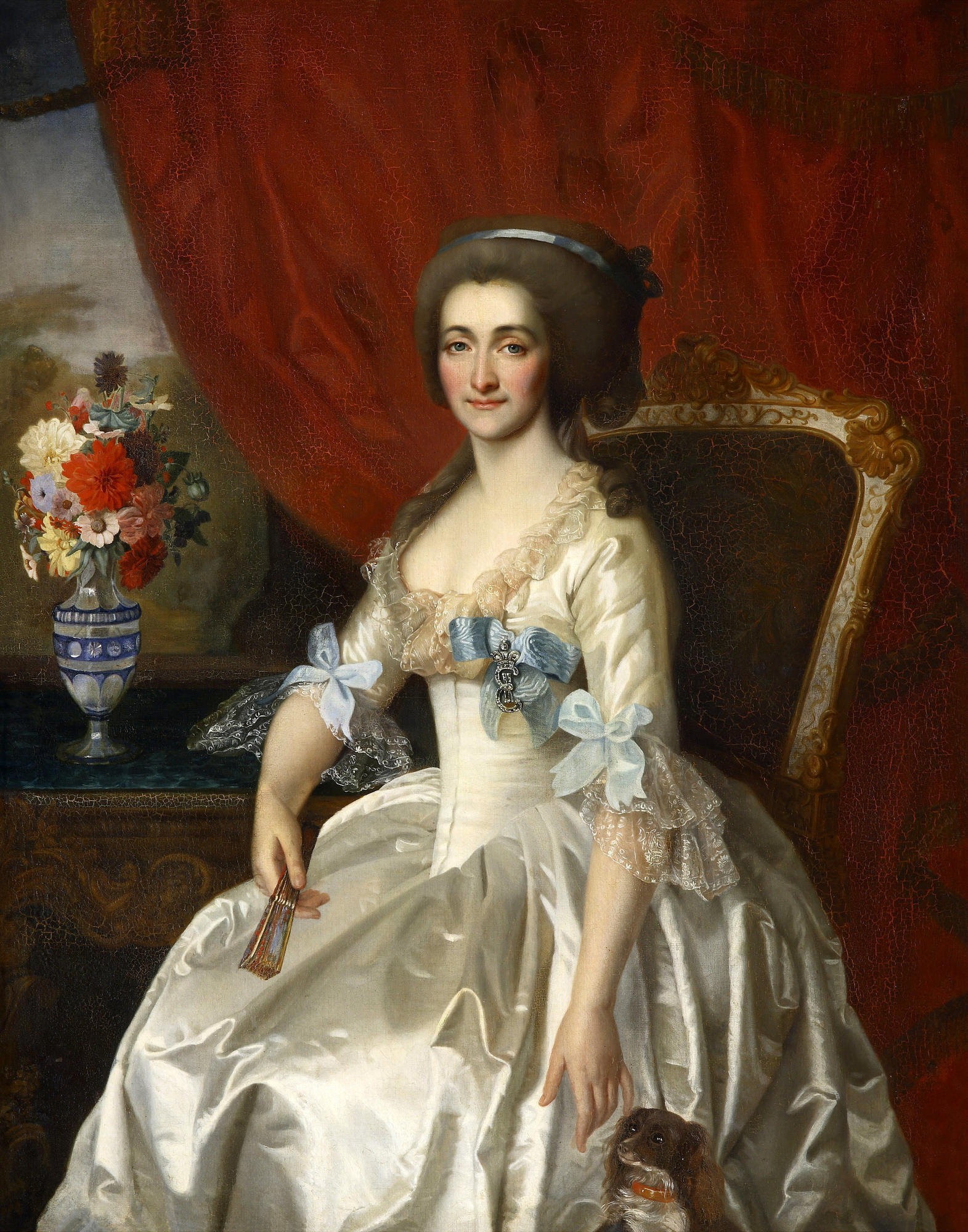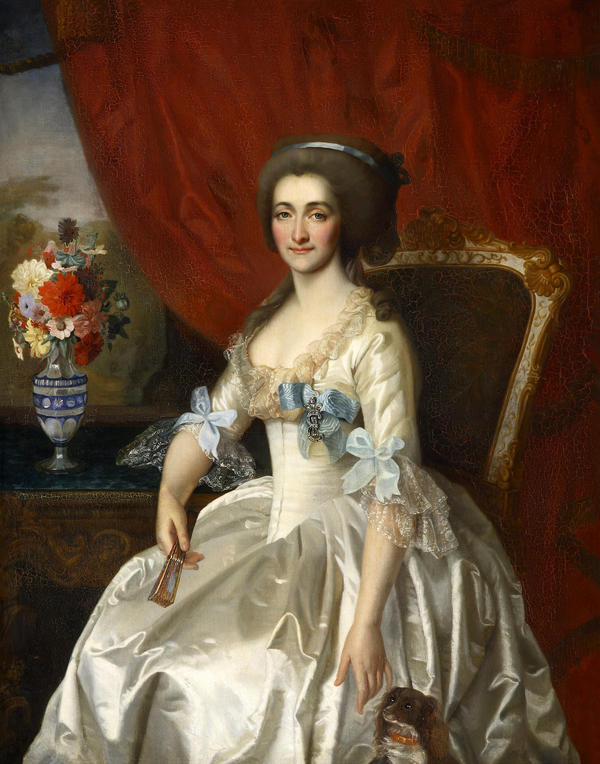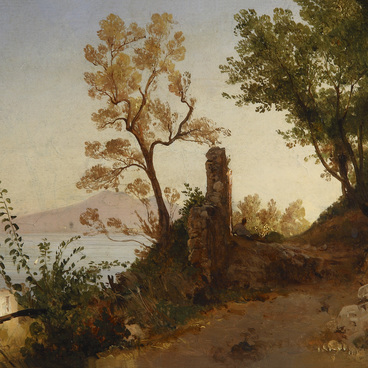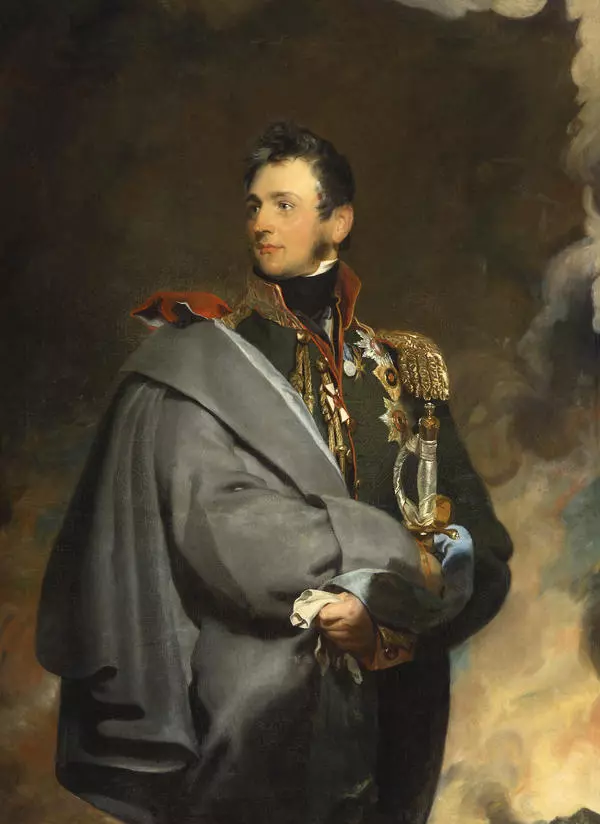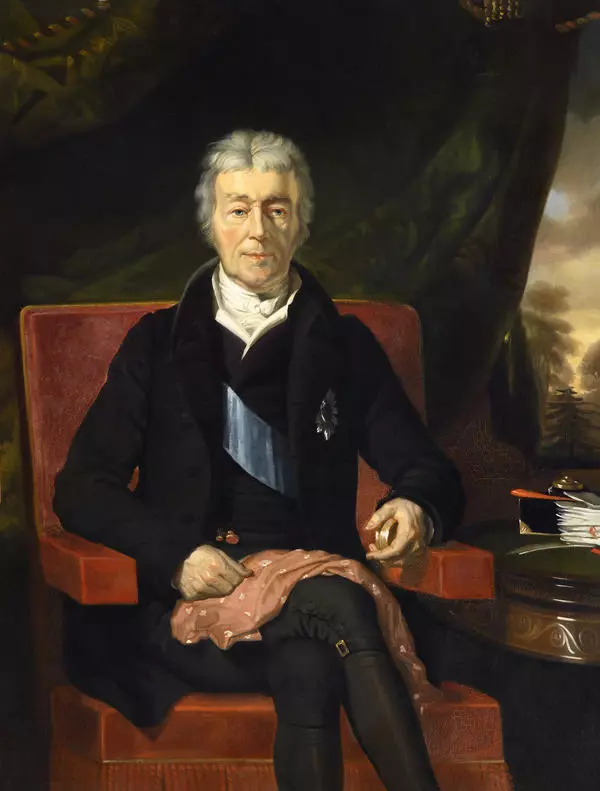Catherine Alekseyevna Vorontsova (nee Senyavina) was born in the family of Admiral Senyavin. She was the second of the admiral’s four daughters. Very young Catherine Alekseyevna was appointed to the position of maid of honor of Catherine II and soon became a favorite of the Empress. There was a slight age difference between Catherine Vorontsova and her sisters, and they appeared at the court at the same time. For their beauty and grace Senyavin sisters were called nymphs by Earl Zavadovsky.
Catherine Alekseyevna’s engagement with Earl Semen Romanovich Vorontsov took place in 1780. A year later the spouses had a son Mikhail, and another year later a daughter Catherine. In 1783, Earl Vorontsov was appointed to the position of envoy to Venice and moved to Italy with his wife and children. Catherine Alexeyevna, immersed in childcare, neglected her own health. In Italy, she fell ill with tuberculosis and died in 1784.
The portrait of Vorontsova from the Alupkin Museum-Reserve was painted by the artist Louise Desseme. It’s a copy of Levitsky 's work.
However, Vorontsova’s portrait is independent work of Louise Desseme as Levitsky’s original is only a chest-high portrait. All the rest of surroundings: the figure sitting in the chair, the hanging folds of the curtain, the favorite dog of Tibetan breed and perfectly painted atlas dress in the background were invented by Louise Desseme. The vase with a bunch of autumn flowers from the Russian garden is a gift from the children to their parent who died young. At the same time, it is also a kind of attribute of that time: the multicolored glass from which the vase is made appeared in Russia in the 1940s. The portrait impresses by its decorative nature. The young woman is sitting in the upholstered green with golden ornament armchair, holding a folded fan in her right hand. She is presented in a silver dress with a low neck, which is typical of noble women of the time, voluminous hair is taken back.
The artist skillfully shows the sensitivity and femininity of the model. Thanks to objectivity of the artist 's view, the light sadness or fatigue hidden in the soft smile does not escape from the notice of the viewer. The portrait of the Countess was painted a year before her death.
Catherine Alekseyevna’s engagement with Earl Semen Romanovich Vorontsov took place in 1780. A year later the spouses had a son Mikhail, and another year later a daughter Catherine. In 1783, Earl Vorontsov was appointed to the position of envoy to Venice and moved to Italy with his wife and children. Catherine Alexeyevna, immersed in childcare, neglected her own health. In Italy, she fell ill with tuberculosis and died in 1784.
The portrait of Vorontsova from the Alupkin Museum-Reserve was painted by the artist Louise Desseme. It’s a copy of Levitsky 's work.
However, Vorontsova’s portrait is independent work of Louise Desseme as Levitsky’s original is only a chest-high portrait. All the rest of surroundings: the figure sitting in the chair, the hanging folds of the curtain, the favorite dog of Tibetan breed and perfectly painted atlas dress in the background were invented by Louise Desseme. The vase with a bunch of autumn flowers from the Russian garden is a gift from the children to their parent who died young. At the same time, it is also a kind of attribute of that time: the multicolored glass from which the vase is made appeared in Russia in the 1940s. The portrait impresses by its decorative nature. The young woman is sitting in the upholstered green with golden ornament armchair, holding a folded fan in her right hand. She is presented in a silver dress with a low neck, which is typical of noble women of the time, voluminous hair is taken back.
The artist skillfully shows the sensitivity and femininity of the model. Thanks to objectivity of the artist 's view, the light sadness or fatigue hidden in the soft smile does not escape from the notice of the viewer. The portrait of the Countess was painted a year before her death.
